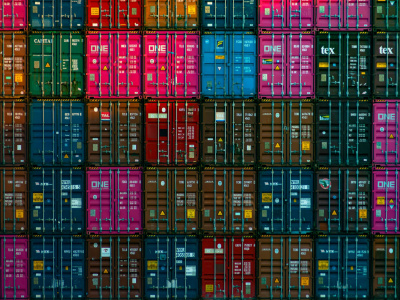
Using official export support in a crisis
Publicly funded export credit agencies (ECAs) help businesses access opportunities abroad, particularly in times of crisis, like the COVID-19 pandemic. Yet, without a clear governance framework, ECA support can become a ‘race to the bottom’ in export support terms and conditions. That could crowd out the private sector and have severe implications, particularly for developing countries. Now is the time to negotiate a clear regulatory framework to prevent a zero-sum subsidy race and observe the sustainable development agenda in official export credit support.
The COVID-19 health crisis has profoundly impacted international trade. The resulting shock to global capital markets and credit stress have affected numerous countries. Rising export costs, disrupted supply chains and the loss of markets are making it difficult for many exporters to access vital commercial finance. This has disproportionately affected small and medium-sized enterprises (SMEs), increasing their default risk.
In times of crisis, major industrial governments have historically supported domestic exporting companies through export credit agencies (ECAs). Publicly funded ECAs help businesses find opportunities abroad, and may also act as lender of last resort if commercial banks retreat as providers of medium and long-term (MLT) finance. The role and significance of ECAs faded in the 1980s, as commercial financial markets became more robust. However, when the 2008 financial crisis hit, ECAs were revived as critical shock absorbers ensuring liquidity in the international trading system, though not all resumed their traditional role as lender of last resort.
ECAs during COVID-19
ECAs have asserted their role in the COVID-19 crisis too. For example, in 2020 Denmark’s export credit agency, EKF, extended its reinsurance scheme to cover OECD and EU countries where importers of Danish goods were struggling with liquidity issues. Poland’s export credit agency, KUKE, expanded its protection to cover all political and commercial risk on export transactions with repayment terms greater than two years. Export Finance Australia created a new A$500mn capital facility for established and previously profitable exporters that, due to COVID-19, could no longer obtain finance from commercial sources. The Export-Import Bank of the United States (EXIM) passed a series of emergency coronavirus measures to “inject liquidity into the market” and help US companies trading internationally.
While all crises are different, some lessons can be learnt from the past. One is that we live in an integrated global system, so problems are most effectively tackled through globally integrated solutions. Unfortunately, the global governance framework for regulating official export credit support was fragmented even before COVID-19. Following the 2008 financial crisis, most ECAs did not resume their former role of ensuring liquidity in the international trading system. Instead, they became cogs of domestic industrial policies set to secure export markets at a time of global stagnation. ECAs were increasingly ‘weaponised’ for this task, competing for scarce export markets both with each other and with the private sector. In doing this, they stretched the boundaries of the carefully constructed legal framework that governed most ECAs most of the time.
ECA rules framework
ECA activities are regulated by various agreements. Key among these is the OECD Arrangement on Officially Supported Exports Credits (referred to as the ‘Arrangement’, with adherent countries called ‘Participants’). The Arrangement sets terms and conditions for export credit, including minimum interest rates, risk fees and maximum repayment terms. Additional ethical agreements, known as ‘Common Approaches’, address anti-bribery, environmental, social and human rights (ESHR) impacts and sustainable lending to heavily indebted poor countries. These dynamic, voluntary guidelines are linked to binding multilateral rules under the Subsidies and Countervailing Measures (SCM) Agreement of the World Trade Organization (WTO). The SCM Agreement permits export credits conforming to the terms of the Arrangement, but also introduces prohibitions, such that governments may not provide export credit at rates below the rates actually paid for the funds. It thus provides a safe harbour for export credits conforming to the OECD Arrangement terms.
A joined-up governance system
Previously, this joined-up governance system created a powerful synergy, increasing both the relevance of the SCM Agreement and the attractiveness of participation in the Arrangement. However, the influence of the Arrangement has declined in light of geopolitical factors, such as the significant volumes of export support provided by countries that are not Participants to the Arrangement. China is an example, as its power transition has been accompanied by a rise in its trade-related ECA activity (Hopewell 2019). But China is not alone. By 2017, the top two export credit providers, China and India, were not Arrangement Participants. This means they operated outside the guidelines of the Arrangement and Common Approaches.
Participant country ECAs have responded to the increased competition by exercising flexibilities under the Arrangement, and by designing programmes outside the scope of the Arrangement. They are shifting towards a ‘whole of government’ approach; establishing export support programmes such as investment insurance, market window arrangements and increased development finance institution (DFI) activity. These are not covered by Arrangement rules. Since 2012, there has been an observable decline in Arrangement-covered MLT export finance, with a commensurate gain in non-Arrangement export support, see Figure 1. The increased activity outside the ECA governance framework has allowed providers to avoid some of the financial conditions and due diligence required with financing within the framework.
Figure 1. Official medium and long-term (MLT) export and trade-related activity from OECD and non-OECD countries

Note: DFI = development finance institution. Source: EXIM 2019: 31.
As more ECA activity takes place outside of the governance structure of the OECD Arrangement and Common Approaches, further pressure is placed on the WTO SCM to regulate the growing volume of these opaque. This comes at an already challenging time, with the WTO dispute settlement mechanism under attack, and trade wars and economic nationalism raging. Inevitably serious questions have emerged about the compliance of ECA activity with international norms and rules, as these norms and rules remain relevant during a crisis.
European ECAs and compliance
In the EU, the Arrangement and Common Approaches were incorporated into Community law by a 1978 Council Decision and has become part of the acquis communautaire. The soft law Arrangement framework thus gained a stronger character within the EU. The EU has exclusive competence in the area of common commercial policy, which includes official export credit rules and WTO membership. Common commercial policy must be based on uniform principles and conducted in the context of the principles and objectives of the Union’s external action.
Yet, when it comes to providing export credit insurance and guarantees, competence lies at the national level, with the individual EU member states. EU member states are required to screen applications for export credit support with regard to environmental and other risks, following the Common Approaches and other EU obligations. Member state self-reports on these screenings suggest total compliance with both the Arrangement and Common Approaches since 2011. The European Commission, too, reports that member state ECAs are in full compliance with Union objectives and obligations.
However, in July 2013, a European Parliament resolution (2012/2320(INI)) asserted that neither the annual reports of the member states nor the Commission’s evaluation of these reports enabled the EU to adequately determine whether the member states’ export credit activities in fact complied with the Union’s foreign policy goals. Nor could it assess the treatment of environmental risks. A subsequent investigation by the European ombudsman found that by not taking sufficient steps to evaluate export credit agencies’ compliance with Union objectives and obligations, particularly with regard to respect for human rights and the environment, the Commission had failed to adequately implement Article 41 of the EU Charter of Fundamental Rights and the principles of good administration (Case 212/2016/JN). The Commission rebutted that it was not required to verify information provided by the member states. Without evidence that EU law had been broken, the Commission said, it had no case to launch an investigation. This leaves it to civil society to bring complaints, though without the necessary transparency to monitor ECA activity effectively.
What now?
The COVID-19 health crisis has generated turbulence in the trade finance market, contributing further to the global economic downturn. With supply chains interrupted and many large-scale projects stalled, financially over-leveraged borrowers are increasingly defaulting on trade and export loans. ECAs and private insurers are paying out unprecedented numbers of claims. Against this backdrop of crisis, ECAs must fulfil their fundamental role of providing security for businesses when commercial institutions are unwilling or unable to do so.
Nonetheless, outstanding governance questions remain. Since 2008, ECAs have become a vital cog of industrial policy. Without a clear governance framework for financial, due diligence and sustainability standards, ECAs could ultimately contribute to a ‘race to the bottom’ in official export support terms and conditions. This would crowd out the private sector and have severe budgetary and societal implications, particularly for developing countries.
Increasing defaults, due to the COVID-19 crisis and the US-China trade war, provide a rare opportunity to push both the United States and China towards greater international cooperation on official export support. The framework for this support should take the form of a successor to the current OECD Arrangement. Now, more than ever, the G20 and International Working Group on Export Credits need to negotiate a regulatory framework to prevent a zero-sum subsidy race and observe the sustainable development agenda in official export credit support.
References
Hopewell, K. 2019. Power transitions and global trade governance: The impact of a rising China on the export credit regime. Regulation and Governance. John Wiley & Sons Australia, Ltd.
EXIM. 2019. Report to the U.S. Congress on Global Export Credit Competition. Washington, DC: Export-Import Bank of the United States.
About the author
Dawar is Senior Lecturer Law at Sussex University
Read the full magazine issue





